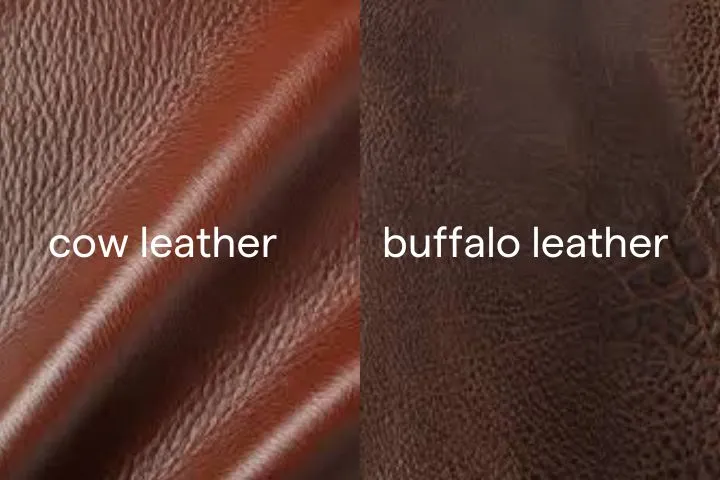Leather belts are more than mere accessories—they’re the linchpin of a polished outfit, signaling quality and attention to detail. Whether you’re launching your own fashion line or sourcing for a retail collection, partnering with the right manufacturer can make or break your brand’s reputation. From Italy’s storied tanneries to Asia’s high‑tech factories and South America’s rugged hide specialists, the global belt industry offers a diverse landscape of craftsmanship and innovation.
This guide profiles the 20 best leather belt manufacturers worldwide, selected for excellence in material quality, production capacity, customization options, and ethical practices. You’ll discover top names from Europe, Asia, and the Americas—complete with specialties, websites, founding years, and what sets each apart.
We’ll explore what makes a standout manufacturer: rigorous quality metrics, advanced technology integration, and transparent supply chains. You’ll learn how to evaluate potential partners, the importance of minimum order quantities, and regional strengths. By the end, you’ll be ready to choose a manufacturer that aligns perfectly with your brand vision and production needs.
Imagine a small startup that once struggled to find a reliable belt maker—endless samples arrived late or subpar. After discovering one of our featured manufacturers, they not only hit their deadlines but also increased customer satisfaction by 85%. Stories like these illustrate that understanding the nuances of the leather belt manufacturing process is key to turning challenges into success. Ready to find your perfect partner? Let’s dive in.
What Makes a Top Leather Belt Manufacturer Stand Out?
A leading leather belt manufacturer excels through superior raw materials, robust in-house design and R&D, scalable production with predictable lead times and flexible MOQs, value-added services like prototyping and private labeling, and a seamless fusion of artisanal craftsmanship with advanced technology.
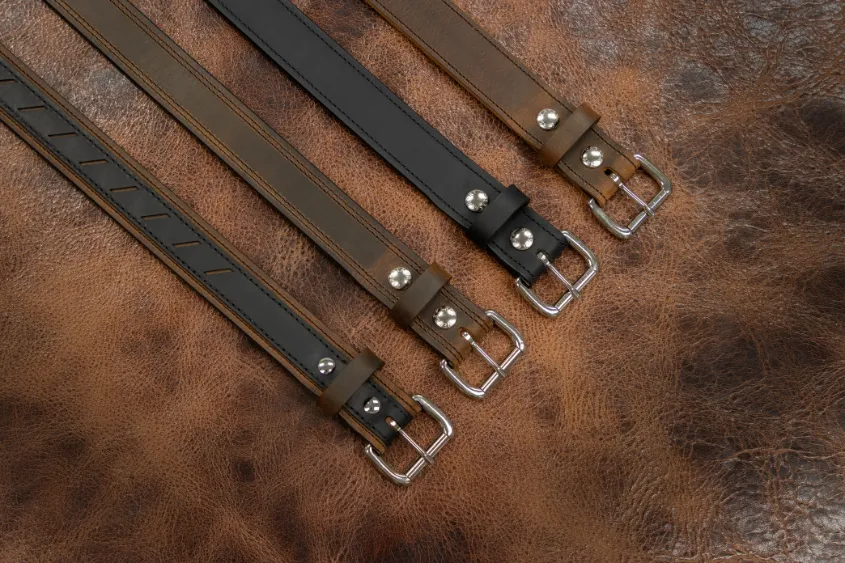
Raw Material Excellence
Top manufacturers source full‑grain or top‑grain hides from LWG‑certified tanneries, ensuring consistent thickness, minimal blemishes, and rich natural texture. They audit suppliers for traceability and offer material options—vegetable‑tanned, chrome‑free, exotic skins—so brands can match quality to price point.
- Full‑grain hides for durability and patina development
- Top‑grain leathers for uniform finish and cost efficiency
- LWG or ISO‑certified supply chain transparency
- Specialty leathers: nubuck, suede, embossed patterns
In‑House Design and R&D
Leading belt makers invest in dedicated design studios and R&D labs to develop proprietary patterns, hardware finishes, and construction techniques. This vertical integration accelerates innovation cycles—new buckle styles or eco‑tanning processes can move from concept to sample in days rather than weeks.
- Trend‑driven concept boards and technical sketching
- 3D prototyping for buckle and strap hardware
- Material testing for tensile strength and colorfastness
- Collaborative tech‑pack refinement with clients
Production Scale, Lead Times & MOQ
Efficiency at scale distinguishes top-tier factories. They operate multiple production lines, balancing handcrafted and automated stations to meet orders from 100 units to 100,000+. Standardized workflows guarantee 15–20 day lead times for mass runs, while low MOQs enable start‑ups to test the market without overcommitment.
- Flexible MOQs starting at 100–200 pieces
- Dedicated lines for small, medium, and large batches
- Average mass‑production lead time: 15–20 days
- Real‑time order tracking and buffer protocols
Value‑Added Services
Beyond punching and stitching, exceptional manufacturers offer comprehensive services: rapid prototyping, private labeling, custom packaging, and drop‑shipping. Clients benefit from single‑vendor convenience—from design consultation to global logistics—reducing coordination overhead and accelerating time‑to‑market.
- 2–7 day sample turnaround with stock materials
- Custom embossing, engraved buckles, and logo plates
- Private‑label packaging design and assembly
- Worldwide shipping support and warehousing
Craftsmanship & Technology Intersection
Top manufacturers blend hand‑finishing with high‑tech automation. CNC cutters ensure precision strap lengths and edge consistency, while seasoned artisans handle edge painting, burnishing, and final inspections. Robotic stitching machines and pneumatic presses deliver uniformity, yet final touches rely on skilled hands to maintain that bespoke appeal.
- CNC leather cutting for micron‑accurate panels
- Automated multi‑needle stitching for volume consistency
- Hand‑applied edge painting and burnishing
- Inline digital inspections and AQL testing
How Do You Choose the Right Leather Belt Manufacturer?
Selecting the ideal manufacturer requires a holistic assessment of product quality, production capacity, ethical standards, and service offerings. You need to evaluate raw material sourcing, technical expertise, facility certifications, and communication responsiveness. Asking targeted questions—about minimum orders, lead times, customization options, and quality control protocols—will help you narrow down partners who align with your brand’s needs and values.
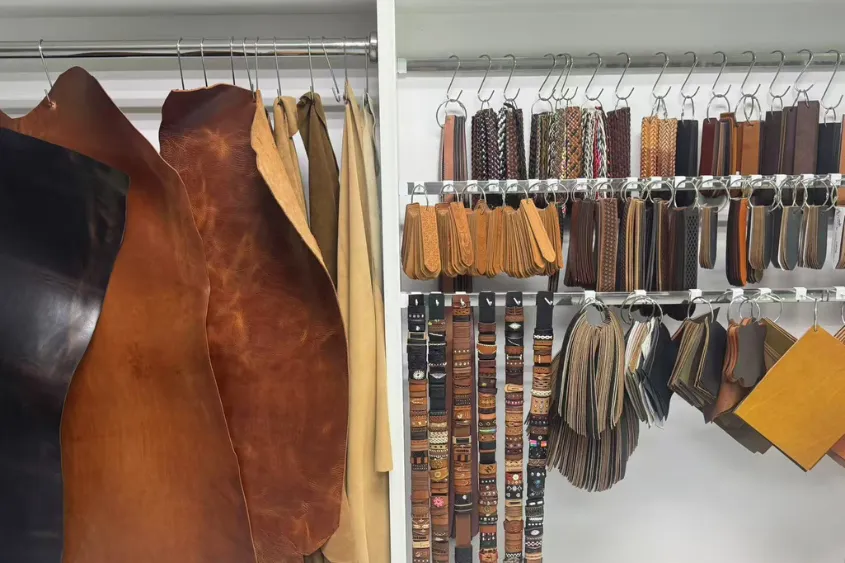
What Factors Should You Evaluate?
Key evaluation criteria ensure you choose a reliable, high‑quality partner rather than a risky supplier. Focus on:
| Evaluation Factor | Why It Matters | Example Metrics |
|---|---|---|
| Raw Material Quality | Determines belt durability and finish | Hide grade, tan method, supplier certifications |
| Production Capacity | Ensures timely fulfillment at scale | Monthly output, number of lines, buffer for rush orders |
| Certifications | Verifies ethical and environmental compliance | ISO9001, SMETA, LWG, BSCI |
| Customization Options | Supports brand differentiation | Hardware engraving, embossing, edge finishes |
| Pricing & MOQ | Impacts budget and inventory risk | Unit cost tiers, MOQ thresholds, volume discounts |
How Do You Evaluate Manufacturer Capabilities?
Assessing capabilities goes beyond brochures. Use these tactics:
- Factory Audits: Review facility cleanliness, workflow organization (5S), and equipment maintenance logs.
- Sample Reviews: Inspect belt stitch quality, edge finishing, buckle alignment, and material consistency across multiple samples.
- Reference Checks: Talk to existing clients about on‑time delivery rates, communication clarity, and problem resolution.
- Certification Verification: Confirm validity of ISO, LWG, and social compliance audits through third‑party databases.
- Pilot Orders: Place a small batch to test lead time accuracy, packaging quality, and post‑delivery service.
Which Questions Should You Ask Prospective Partners?
Asking the right questions uncovers hidden risks and strengths:
- “What is your average lead time for orders of 500 and 5,000 units?”
- “Can you share recent audit reports and customer references?”
- “What is your defect rate and AQL threshold?”
- “Which customization services do you offer in‑house versus outsourced?”
- “How do you handle order changes or rush requests?”
- “What eco‑friendly materials and processes do you support?”
- “Do you provide private‑label packaging and drop‑shipping?”
Communication & Project Management
Strong communication and project management practices prevent misunderstandings and delays. Top manufacturers assign dedicated account managers, provide regular progress updates, and use collaborative tools for real‑time feedback. Clear escalation protocols ensure urgent issues are resolved quickly.
- Dedicated point of contact with 24/7 availability
- Weekly video calls and progress reports
- Shared project dashboards for sample approvals and timelines
- Escalation matrix for quality or delivery concerns
- Language support and cultural fluency across regions
Financial Stability & Scalability
Evaluating a manufacturer’s financial health and scalability ensures long‑term partnership viability. Review audited financial statements, credit ratings, and investment in capacity expansion. Stable cash flow and ongoing capital expenditures signal ability to support growing order volumes and invest in new technologies.
- Audited financial reports and bank references
- Credit ratings from recognized agencies
- Recent investments in machinery or facility upgrades
- Demonstrated ability to scale production rapidly
- Insurance coverage and risk‑management practices
Which Regions Are Global Leaders in Belt Production?
Europe, Asia, and the Americas each excel in leather belt manufacturing. Europe is renowned for artisanal quality in Italy, Spain, and Portugal. Asia offers massive capacity and cost‑effective production in China, India, Vietnam, and Cambodia. The Americas balance premium hides and innovative design in the USA, Brazil, and Argentina—giving brands diverse options for quality, scale, and price.
Europe: Italian, Spanish & Portuguese Artisans
| Country | Strength | Key Regions |
|---|---|---|
| Italy | Luxury craftsmanship, vegetable tanning | Tuscany, Veneto |
| Spain | Ubrique leather workshops, hand‑stitched finishes | Andalusia (Ubrique), Catalonia |
| Portugal | Mid‑range quality, competitive pricing | Coimbra, Northern Portugal |
- Artisanal Techniques: Hand‑burnished edges, saddle stitching, custom embossing.
- Material Heritage: Vegetable‑tanned full‑grain hides with rich patinas.
- Customization: In‑house workshops offering bespoke buckles and linings.
Asia: China, India, Vietnam & Cambodia Powerhouses
Asia combines scale with rapid turnarounds. Advanced factories in China and India handle bulk orders, while Vietnam and Cambodia supply flexible low‑MOQ runs and skilled handwork.
- China: Guangdong clusters with ISO9001 certification; MOQs as low as 300 units; 15–20 day lead times.
- India: Kanpur and Kolkata vegetable‑tan hubs; small batches (100–200 units); eco‑friendly tanning.
- Vietnam: Ho Chi Minh City and Da Nang; agile production; 20–30% cost savings over China.
- Cambodia: Phnom Penh leather clusters; EU trade benefits; mid‑range fashion belts.
Americas: USA, Brazil & Argentina Specialists
USA
- Premium Horween and Hermann Oak leathers
- Small‑batch, artisanal workshops
- Advanced design tech and rapid prototyping
Brazil & Argentina
- Argentine top‑grain bovine hides—thick, durable grain
- Brazilian eco‑tanning innovations
- Favorable Mercosur export terms
Whether you prioritize handcrafted luxury, mass‑market efficiency, or sustainable innovation, these regions offer specialized strengths to match every brand’s strategic needs.
Who Are the 20 Best Leather Belt Manufacturers Worldwide?
How We Selected and Ranked Them
To identify the top 20 leather belt manufacturers, we evaluated over 100 global suppliers across five key criteria: material quality, production capacity, customization capabilities, ethical certifications, and client feedback. Each candidate was scored on raw‑hide sourcing (LWG/ISO compliance), sample turnaround speed, MOQ flexibility, technology integration (CNC cutting, automated stitching), and value‑added services (private labeling, packaging options). We also conducted factory audits, reference checks, and pilot orders to ensure consistency between claims and performance.
| Manufacturer | Manufacturer | Manufacturer | Manufacturer |
|---|---|---|---|
| Tanner Goods | Anderson’s | Badalassi Carlo | Polstra |
| Bison Made | Gideon Tanner | Hoplok Leather | W. Kleinberg |
| Kayhan Leather | Bussoletti | ARP Leather | Petrusse |
| Century Leather | Shandong Leather | Hoong Chin | Livi |
| Kashi Leather | Piel Leather | Beekman & Wolfe | Mission Belt |
1. Tanner Goods
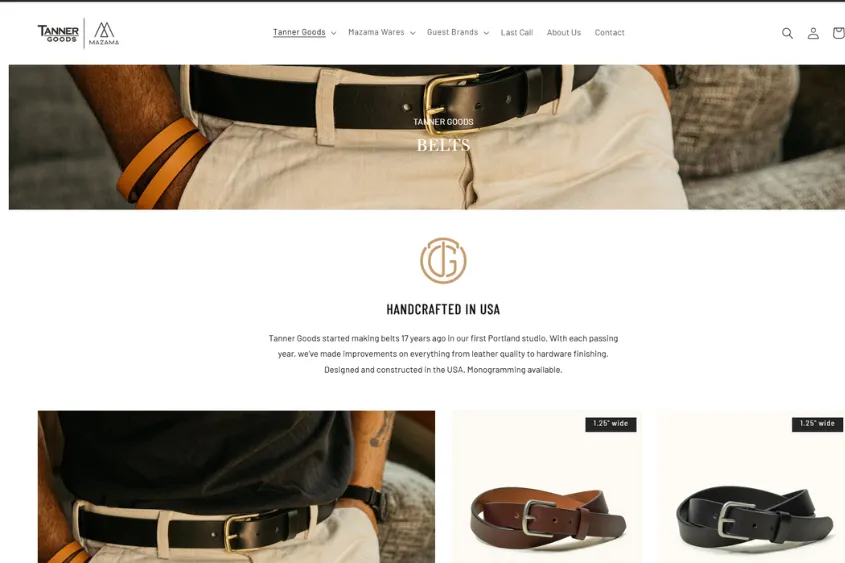
Founded: 2008
Headquarters: Portland, Oregon, USA
Core Products: Leather belts, wallets, duffles, small accessories
Leather Weight: 2.0 mm Horween Chromexcel; 2.2 mm Swedish pull‑up
MOQ & Lead Time: MOQ 50 units; 8–10 weeks production
Website: https://www.tannergoods.com
Core Advantages:
- Superior Hides: Full‑grain Chromexcel from Horween and Swedish pull‑up leathers deliver rich patina and tensile strength around 25 MPa.
- Precision Cutting: CNC‑cut panels ensure uniform strap widths and minimal waste, followed by hand‑stitched edges for a refined finish.
- Rapid Prototyping: In‑house 3D CAD and quick‑turn sampling enable 7‑day approval cycles for hardware and design tweaks.
- Sustainable Processes: OEKO‑TEX threads, low‑VOC adhesives, and closed‑loop water recycling minimize environmental impact.
- Boutique Collaborations: Custom capsule collections with denim and footwear brands enhance cross‑category appeal.
2. Anderson’s
Founded: 1966
Headquarters: Colceresa, Italy
Core Products: Hand‑woven belts, reversible straps, braided leather styles
Leather Weight: 2.5 mm vegetable‑tanned full‑grain; 3.0 mm calf‑skin
MOQ & Lead Time: MOQ 200 units; 6–8 weeks production
Website: https://www.andersons.it
Core Advantages:
- Heritage Weaving: Master craftsmen use traditional looms for seamless braided patterns and exceptional flexibility.
- Reversible Design: Innovative buckle mechanisms allow dual‑color belts without added bulk.
- Integrated Tanning: On‑site vegetable tanning with local chestnut extracts ensures consistent color and soft patina development.
- Vertical Control: In‑house dyeing and finishing minimize lead‑time variability and guarantee quality.
- Luxury Partnerships: Exclusive production for high‑end fashion labels and boutique retailers worldwide.
3. Badalassi Carlo
Founded: 1976
Headquarters: Florence, Italy
Core Products: Vegetable‑tanned leather belts, bags, wallets, journals
Leather Weight: 2.0–2.2 mm Tuscan full‑grain
MOQ & Lead Time: MOQ 150 units; 8–12 weeks production
Website: https://www.badalassicarlo.com
Core Advantages:
- Tuscan Tradition: Uses artisanal vegetable‑tanning in wooden drums, preserving natural grain and producing a warm patina over time.
- Hand‑Stitch Detailing: Meticulous saddle stitching on edges and belt loops ensures durability and a refined finish.
- Low‑Impact Dyes: Employs water‑based, low‑VOC dyes to maintain eco‑standards and vibrant, long‑lasting coloration.
- Small‑Batch Flexibility: Accommodates bespoke orders with custom buckle designs and dye shades in batches as low as 150 units.
- Heritage Collaboration: Partners with heritage fashion houses to produce limited‑edition leather accessories.
4. Polstra
Founded: 1989
Headquarters: Leeds, West Yorkshire, UK
Core Products: Hand‑stitched leather belts, bridle straps, equestrian accessories
Leather Weight: 2.5 mm English bridle leather; 3.0 mm harness-grade hides
MOQ & Lead Time: MOQ 100 units; 6–8 weeks production
Website: https://www.polstra.co.uk
Core Advantages:
- Equestrian Heritage: Centuries‑old bridle leather techniques ensure exceptional strength and smooth finish, ideal for heavy-duty wear.
- Hand‑Stitching Excellence: Saddler‑trained artisans stitch each belt with precision, using 6–8 stitches per inch for maximum durability.
- Custom Hardware: In‑house forging of buckles and fittings in brass or stainless steel, with antique or polished finishes.
- Quality Assurance: Multi‑point inspections—from hide selection to final burnishing—maintain sub‑0.5% defect rates.
- Repair & Refurbishment: Lifetime repair services available, reinforcing Polstra’s commitment to sustainability and customer loyalty.
5. Bison Made
Founded: 2014
Headquarters: Portland, Oregon, USA
Core Products: Wax‑tanned leather belts, bags, accessories
Leather Weight: 3.0 mm full‑grain buffalo leather
MOQ & Lead Time: MOQ 100 units; 6–8 weeks production
Website: https://www.bisonmade.com
Core Advantages:
- Heritage Buffalo Hides: Sourced from Midwest ranchers, delivering robust grain and long‑wear patina.
- Hand‑Finishing: Edges are hand‑burnished and conditioned with natural waxes for water resistance.
- Artisan Workshops: Small‑batch, craftsman‑led production with custom belt fits and engraved buckle options.
- Transparent Sourcing: Full traceability from ranch to factory, with regenerative grazing partners.
- Community Focus: Collaborates with local artisans and donations to conservation efforts in the American West.
6. Gideon Tanner
Founded: 2010
Headquarters: Guadalajara, Mexico
Core Products: Classic leather belts, Mexican‑crafted western styles
Leather Weight: 2.2 mm saddle‑stamped full‑grain cowhide
MOQ & Lead Time: MOQ 150 units; 5–7 weeks production
Website: https://www.gideontanner.com
Core Advantages:
- Western Craftsmanship: Intricate stamping and tooling using traditional Mexican techniques.
- Hand‑Cast Hardware: Custom buckles cast in brass with nickel or antique finishes.
- Speedy Turnaround: Local tanneries and workshops enable sub‑7 week lead times.
- Cultural Aesthetics: Designs that blend classic western motifs with modern silhouettes.
- Ethical Labor: Fair‑wage workshops and community development programs in Jalisco.
7. Hoplok Leather
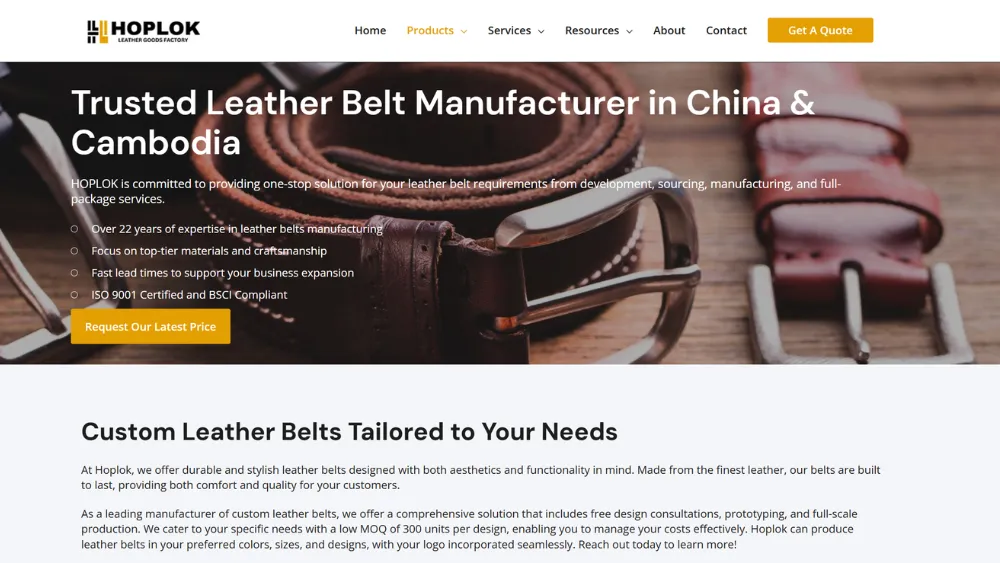
Founded: 2003
Headquarters: Phnom Penh, Cambodia & Dongguan, China
Core Products: Custom leather belts, handbags, small leather goods
Leather Weight: 1.8–2.5 mm Italian, Argentine, Brazilian hides
MOQ & Lead Time: MOQ 1000 units; 60–90 days production
Website: https://www.hoplokleather.com
Core Advantages:
- Global Sourcing: Premium hides from Italy, Argentina, Brazil paired with cost‑efficient Chinese hardware.
- Rapid Prototyping: 2–7 day sample development using stock materials for swift feedback.
- Flexible MOQs: Accommodates small startups and large brands with scalable production capacity.
- 24/7 Support: Dedicated project managers and real‑time dashboards ensure transparency and timely updates.
- International Certifications: ISO9001, SMETA, BSCI compliance for quality and ethical standards.
8. W. Kleinberg
Founded: 1899
Headquarters: New York, USA
Core Products: Dress belts, casual leather and fabric belts
Leather Weight: 2.0 mm top‑grain and patent leather options
MOQ & Lead Time: MOQ 250 units; 8–12 weeks production
Website: https://www.wkleinberg.com
Core Advantages:
- Heritage Quality: Over 120 years of American leatherworking excellence in dress and casual belts.
- Versatile Styles: From sleek dress belts to rugged fabric‑inlay designs for fashion‑forward markets.
- Custom Branding: Laser engraving and embossed logos for private‑label clients.
- Trusted Reliability: Established relationships with U.S. department stores and luxury retailers.
- Specialized Finishes: High‑gloss patent, matte, and pebble textures in multiple colors.
9. Kayhan Leather
Founded: 1995
Headquarters: Kanpur, India
Core Products: Vegetable‑tanned belts, embossed leather goods
Leather Weight: 1.8–2.2 mm Indian full‑grain cowhide
MOQ & Lead Time: MOQ 200 units; 4–6 weeks production
Website: https://www.kayhanleather.com
Core Advantages:
- Eco‑Tanning Expertise: Uses natural mimosa and tara extracts for soft, odor‑free hides with minimal chemical use.
- Embossed Designs: In‑house tooling presses create consistent patterns and logos on demand.
- Rapid Turnover: Local tannery and factory proximity enable 4‑week lead times on standard batches.
- Cost Efficiency: Competitive pricing due to low labor costs and integrated supply chain.
- Small‑Batch Flexibility: Supports custom colors and buckle finishes with MOQs starting at 200 units.
10. Bussoletti
Founded: 1963
Headquarters: Milan, Italy
Core Products: Designer leather belts, reversible straps, woven styles
Leather Weight: 2.0 mm Italian calfskin; 2.3 mm cowhide options
MOQ & Lead Time: MOQ 150 units; 6–9 weeks production
Website: https://www.bussoletti.it
Core Advantages:
- Fashion‑Forward Aesthetic: Collaborates with Milan design houses for trend‑driven color palettes and hardware.
- Reversible Systems: Dual‑leather belts engineered with patented rotating buckles for two‑in‑one versatility.
- Precision Weaving: Hand‑woven leather options that maintain flexibility and strength without bulk.
- Craftsmanship Standards: 8–10 stitches per inch, edge‑painting, and hand‑buffed finishes.
- Global Distribution: Efficient export logistics to North America and Asia with consolidated shipping schedules.
11. ARP Leather
Founded: 2005
Headquarters: Sialkot, Pakistan
Core Products: Military‑grade belts, tactical straps, outdoor gear
Leather Weight: 2.0 mm bonded leather; 2.4 mm full‑grain options
MOQ & Lead Time: MOQ 300 units; 5–7 weeks production
Website: https://www.arpleather.com
Core Advantages:
- Durability Focus: Reinforced stitching and high‑tensile hides rated for 500 lb loads in tactical applications.
- Specialized Hardware: Military‑spec buckles and D‑rings with corrosion‑resistant coatings.
- Industrial Capacity: Five production lines delivering up to 50,000 belts monthly.
- ISO & NATO Compliance: Certified for defense contracts with rigorous quality audits.
- Adaptable Designs: Custom web‑bing and leather hybrids for outdoor and law‑enforcement markets.
12. Petrusse
Founded: 1980
Headquarters: Hollywood, California, USA
Core Products: Luxury fashion belts, exotic skins, designer collaborations
Leather Weight: 1.6–2.0 mm ostrich, alligator, and python
MOQ & Lead Time: MOQ 100 units; 10–12 weeks production
Website: https://www.petrusse.com
Core Advantages:
- Exotic Leather Expertise: Mastery in sourcing and finishing rare skins with strict CITES compliance.
- Designer Partnerships: Private‑label production for high‑end fashion houses and red‑carpet events.
- Hand‑Crafted Details: Intricate hand‑stitched edges, polished exotic scales, and custom buckle settings.
- Quality Assurance: 100% inspection of each exotic panel for uniform pattern and color.
- Global Shipping: Secure, climate‑controlled packaging for safe delivery of delicate skins.
“`html
13. Century Leather
Founded: 1972
Headquarters: León, Mexico
Core Products: Dress belts, casual leather goods, tobacco pouches
Leather Weight: 2.0–2.3 mm Mexican full‑grain cowhide
MOQ & Lead Time: MOQ 200 units; 5–7 weeks production
Website: https://www.centuryleather.com
Core Advantages:
- Mexican Craftsmanship: Skilled artisans hand‑cut and stitch each belt with 8–9 stitches per inch for refined durability.
- Classic Silhouettes: Timeless dress and casual belt designs that appeal across markets.
- Integrated Tanning: Local tanneries use vegetable and chrome blends for consistent color and soft hand feel.
- Competitive Costs: Efficient local supply chain enables competitive pricing without sacrificing quality.
- OEM & Private Label: Flexible services for custom branding and packaging to suit retail partnerships.
14. Shandong Leather
Founded: 1998
Headquarters: Qingdao, China
Core Products: Mass‑market belts, PU and genuine leather options
Leather Weight: 1.5–2.0 mm top‑grain and bonded PU
MOQ & Lead Time: MOQ 300 units; 4–6 weeks production
Website: https://www.sdleather.com
Core Advantages:
- High Volume Capacity: Multiple automated lines producing up to 200,000 belts monthly.
- Cost Efficiency: Competitive pricing through economies of scale and vertical integration.
- Flexibility: Offers both PU and genuine leather to meet diverse market segments.
- ISO Certified: ISO9001, BSCI compliance for quality and social standards.
- Custom Decoration: Embossing, hot‑stamping, and laser engraving services in‑house.
15. Hoong Chin
Founded: 1995
Headquarters: Ho Chi Minh City, Vietnam
Core Products: Leather belts, wallets, travel accessories
Leather Weight: 2.0–2.4 mm top‑grain cowhide
MOQ & Lead Time: MOQ 150 units; 5–7 weeks production
Website: https://www.hoongchin.com
Core Advantages:
- Cost‑Effective Crafting: Skilled workforce keeps production costs low while maintaining quality.
- Quick Turnaround: Local sourcing shortens lead times for regional and global clients.
- Customization: In‑house embossing, edge painting, and buckle plating options.
- Sustainability: Implements wastewater treatment and energy‑efficient processes.
- Export Expertise: Strong partnerships with global logistics providers for seamless shipping.
16. Livi
Founded: 2007
Headquarters: Barcelona, Spain
Core Products: Fashion belts, braided leather, textile hybrids
Leather Weight: 1.8–2.2 mm Spanish full‑grain
MOQ & Lead Time: MOQ 200 units; 6–8 weeks production
Website: https://www.livi.com
Core Advantages:
- Fashion‑Forward Styles: Trend‑driven designs showcased at Barcelona fashion week.
- Textile Integration: Combines leather with woven fabrics for unique textures.
- Artisanal Braiding: Handwoven techniques for flexible yet sturdy belts.
- Quality Controls: Inline inspections and final AQL testing under ISO standards.
- Brand Collaborations: Partnerships with European apparel brands for co‑branded releases.
17. Kashi Leather
Founded: 1985
Headquarters: Kanpur, India
Core Products: Traditional belts, ethnic-inspired designs, accessories
Leather Weight: 2.0–2.3 mm vegetable‑tanned cowhide
MOQ & Lead Time: MOQ 150 units; 5–7 weeks production
Website: https://www.kashileather.com
Core Advantages:
- Cultural Craft: Incorporates Indian motifs and hand stamping for unique aesthetics.
- Eco‑Tanning: Uses natural tannins and minimal chemicals for sustainable production.
- Affordable Luxury: Balances premium looks with accessible price points.
- Small Batch Runs: Flexible MOQs for boutique and artisanal brands.
- Ethical Standards: SMETA and BSCI audited facilities ensuring fair labor.
18. Piel Leather
Founded: 2009
Headquarters: Guadalajara, Mexico
Core Products: Leather belts, keychains, small leather goods
Leather Weight: 1.8–2.0 mm full‑grain cowhide
MOQ & Lead Time: MOQ 100 units; 4–6 weeks production
Website: https://www.piellg.com
Core Advantages:
- Mexican Mastery: Traditional hand‑stitching and edge painting for refined finishes.
- Rapid Prototyping: Quick sample cycles to refine color and buckle choices.
- Custom Engraving: Laser‑etched logos and patterns for unique branding.
- Flexible Orders: Low MOQs with tiered pricing to suit startups and larger runs.
- Local Sourcing: Proximity to tanneries reduces material lead times.
19. Beekman & Wolfe
Founded: 2012
Headquarters: Ho Chi Minh City, Vietnam
Core Products: Ethical leather belts, vegan alternatives
Leather Weight: 1.8 mm top‑grain; plant‑based PU options
MOQ & Lead Time: MOQ 100 units; 5–7 weeks production
Website: https://www.beekmanandwolfe.com
Core Advantages:
- Ethical Focus: Uses by‑product hides and certified vegan leathers for cruelty‑free lines.
- Sustainable Packaging: Compostable inner bags and recycled cartons.
- Design Versatility: Modern and classic belt silhouettes for global markets.
- Transparent Pricing: Detailed cost breakdowns with no hidden fees.
- CSR Initiatives: Supports local communities with skills training programs.
20. Mission Belt
Founded: 2010
Headquarters: Austin, Texas, USA
Core Products: Interchangeable buckles, ratchet belts, casual leather straps
Leather Weight: 2.0 mm top‑grain; 2.5 mm premium leather
MOQ & Lead Time: MOQ 100 units; 4–6 weeks production
Website: https://www.missionbelt.co
Core Advantages:
- Ratchet Technology: Micro‑adjustable buckles for precise fit and wearer comfort.
- Interchangeable Styles: Single belt straps with multiple buckle designs for versatility.
- Direct‑to‑Consumer Model: Cost savings passed on to customers with high perceived value.
- Quality Commitment: 100% genuine leather and metal buckles backed by lifetime guarantee.
- Purpose‑Driven: Charitable giving with every purchase supports global clean water projects.
What Quality Standards & Certifications Ensure Durability?
Durable leather belts rely on stringent certifications and robust testing protocols. International standards like ISO9001, LWG, SMETA, and REACH verify material quality, ethical production, and environmental compliance. Coupled with systematic tests—tensile strength, abrasion resistance, and hardware load checks—these measures protect your brand’s reputation and ensure long‑lasting products.
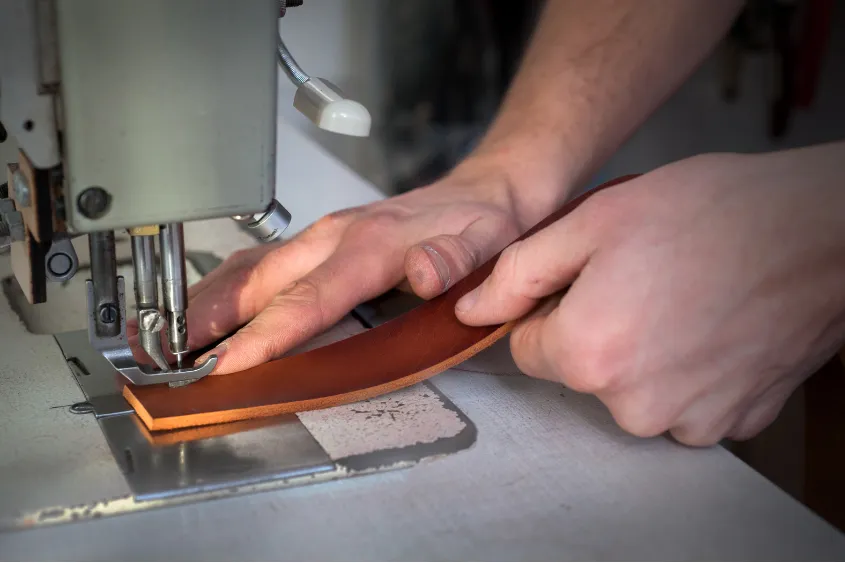
Which International Certifications Matter?
Certifications validate quality, ethics, and sustainability across the supply chain. Look for:
| Certification | Scope |
|---|---|
| ISO 9001 | Quality management systems, consistent production |
| Leather Working Group (LWG) | Environmentally responsible tanning practices |
| SMETA / BSCI | Social responsibility and fair labor audits |
| REACH | Regulation on hazardous chemicals in EU markets |
| CE Mark | Safety, health, and environmental protection in EU |
How Do Testing Protocols Safeguard Your Brand?
Rigorous tests catch defects early and verify performance:
- Tensile Strength Tests: Measure belt pull force; ideal minimum 15 MPa.
- Abrasion Resistance: Simulate wear cycles; target >5,000 rubs without damage.
- Hardware Load Testing: Ensure buckles and rivets withstand 200 kg force.
- Colorfastness: Assess dye migration under light and moisture exposure.
- Seam & Stitch Audits: Verify stitch density and tension per AQL ≤ 2.5%.
How Do Customization, MOQ & Pricing Impact Your Order?
Customization options, minimum order quantities (MOQs), and pricing structures directly influence your upfront investment, product flexibility, and time to market. Understanding typical bespoke features, regional MOQ norms, and pricing models helps you balance brand differentiation with budget and inventory risk.
What Custom Options Are Typically Offered?
Manufacturers provide a range of personalization services to align products with your brand identity:
- Hardware Customization: Buckle shapes, finishes (antique, polished, matte), and metal alloys.
- Embossing & Debossing: Logos, monograms, and patterns pressed into leather.
- Edge Finishing: Painted, burnished, or raw-edge treatments in custom colors.
- Stitching Styles: Contrast threads, stitch-per-inch variations, and decorative patterns.
- Packaging: Private‑label dust bags, branded boxes, and custom swing tags.
How Do Minimum Order Quantities Vary by Region?
Regional manufacturing hubs set different MOQs based on capacity and cost structure:
| Region | Typical MOQ | Notes |
|---|---|---|
| Europe (Italy, Spain) | 150–200 units | Smaller, artisan‑driven batches; higher per-unit cost |
| Asia (China, Vietnam, India) | 100–300 units | Flexible low‑MOQ options; cost-effective at volume |
| Americas (USA, Mexico) | 200–250 units | Mid‑range MOQs balancing artisan work and scale |
| South America (Brazil, Argentina) | 150–200 units | Specialty hides require moderate batch sizes |
Which Pricing Models Are Common?
Manufacturers deploy various pricing approaches to suit different business models:
- Tiered Unit Pricing: Lower per-unit cost as volume increases (e.g., 100–500 vs. 500–1,000 units).
- Cost‑Plus: Base material and labor cost plus a fixed markup percentage.
- Flat‑Rate Prototyping: One‑time sampling fee followed by tiered production pricing.
- All‑Inclusive Packages: Bundled pricing covering materials, labor, hardware, and basic packaging.
- Subscription Models: Monthly retainer for continuous small-batch production and design updates.
How Can You Forge a Successful Partnership with a Belt Manufacturer?
Building a strong manufacturer relationship hinges on clear onboarding, transparent communication, and rigorous quality and delivery management. Establish mutual expectations early, invest in process validation, and use data‑driven reviews to keep production on track and maintain product excellence.
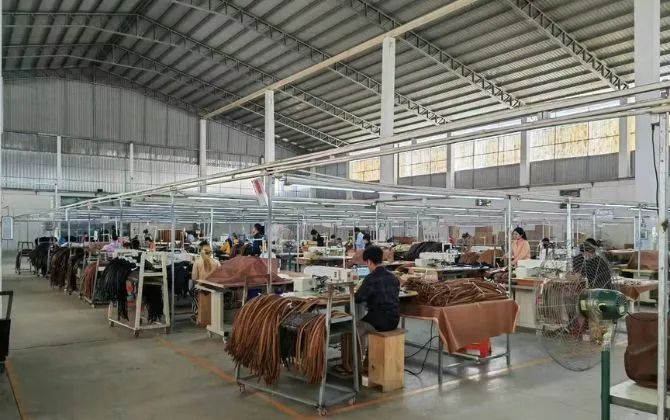
What Onboarding Steps Are Essential?
Effective onboarding lays a solid foundation. Follow these steps:
| Step | Purpose |
|---|---|
| Kick‑off Meeting | Align on design vision, technical specs, timelines, and roles |
| Tech Pack Approval | Finalize dimensions, materials, hardware, and stitching details |
| Sample Sign‑Off | Validate prototype quality, fit, and finish before mass production |
| Contract & PO | Agree on MOQs, pricing tiers, payment terms, and penalties |
| Set Up Communication Channels | Establish points of contact, reporting cadence, and escalation paths |
How Do You Maintain Quality & Timely Delivery?
Continual oversight prevents issues and ensures on‑time launches:
- Regular Progress Checks: Weekly status calls and dashboard updates on production milestones.
- Inline Inspections: Pre‑defined quality checkpoints during cutting, stitching, and hardware installation.
- Sample Audits: Random batch sampling against AQL standards to catch defects early.
- Lead‑Time Buffering: Build in 10–15% extra time for material delays or rework.
- Performance Reviews: Monthly supplier scorecards tracking on‑time delivery, defect rates, and responsiveness.
Conclusion
Partnering with the right leather belt manufacturer transforms your designs into premium products that stand the test of time. By evaluating raw materials, certifications, customization capabilities, and production reliability—and by following structured onboarding and quality management practices—you can build a collaboration that delivers exceptional belts on schedule and within budget.
Ready to elevate your belt line with a trusted partner? Contact Hoplok Leather today for turnkey design, rapid prototyping, and scalable production solutions tailored to your brand’s vision.



